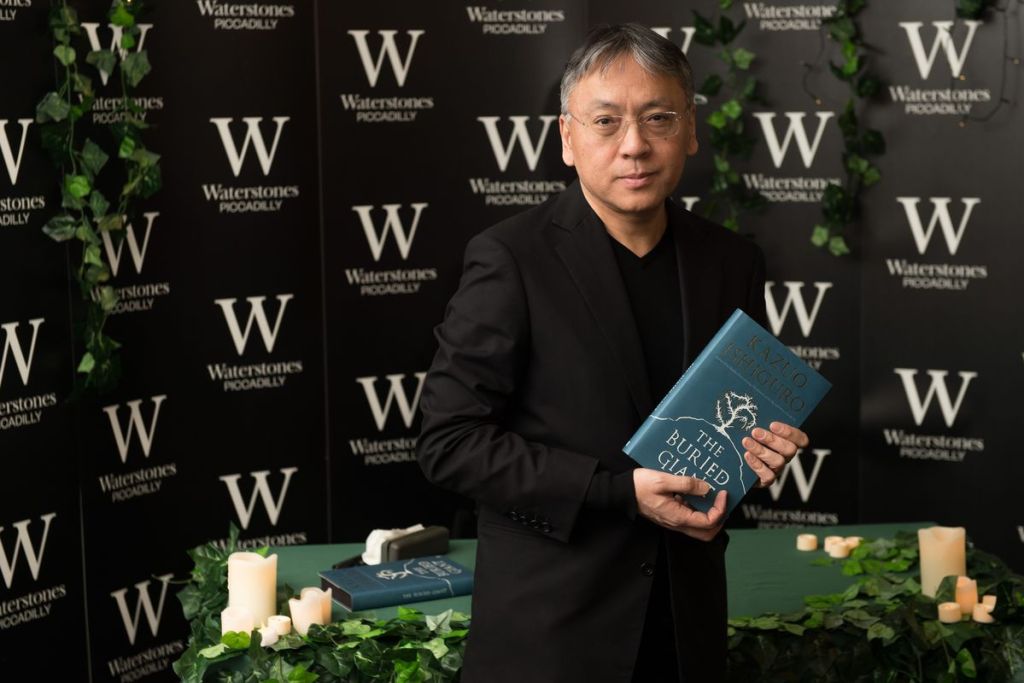The Role Of Imagination In Kazuo Ishiguro's Exploration Of Memory

Table of Contents
The Unreliable Narrator and the Power of Imagination
Ishiguro frequently employs unreliable narrators whose memories are fragmented and subjective. Their recollections are often incomplete, influenced by personal biases, and shaped by the passage of time. Imagination, therefore, fills in the gaps, shaping their understanding of the past and influencing their present actions. This interplay between memory and imagination is central to understanding the psychological complexities of his characters.
Examples: The fragmented memories in Never Let Me Go leave the reader questioning the true nature of the clones' existence, while the constructed narratives in The Remains of the Day reveal a butler's carefully curated self-deception.
-
Selective memory impacts character development: Characters actively choose which memories to retain and how to present them, shaping their self-image and influencing their relationships with others. This selective process is heavily influenced by the imagination's ability to fill in narrative gaps and create a coherent (though potentially false) self-narrative.
-
Imagination influences the narrator's self-perception: The way a character imagines their past directly shapes their present identity and self-worth. This is particularly evident in The Remains of the Day, where Stevens' imagined loyalty to Lord Darlington masks a deeper, unspoken regret.
-
Ethical implications of fabricated memories: Ishiguro explores the ethical implications of manipulating memory, showing how constructing a false narrative can have profound consequences on both the individual and those around them. The consequences of this manipulation are often explored through the characters' relationships and actions.
Memory as a Constructed Narrative: The Role of Imagination in Shaping Identity
Ishiguro suggests that memory isn't a passive recording but an active process of construction, heavily influenced by personal desires, societal pressures, and the limitations of human perception. Imagination plays a pivotal role in this construction, influencing how characters understand their identities and relationships. It’s not simply about remembering, but about re-imagining the past to fit the present narrative.
Examples: The way Stevens reconstructs his past in The Remains of the Day, meticulously crafting a narrative that both hides and reveals his true feelings, showcases this active process of memory construction. His carefully constructed narrative acts as a defense mechanism, preventing him from confronting the uncomfortable truths of his past.
-
Imagined scenarios shape character motivations: Characters' actions are often driven by imagined scenarios, both positive and negative. These imagined futures and pasts inform their decisions and shape their interactions with other characters.
-
Relationship between memory, identity, and self-deception: Ishiguro masterfully reveals how our memories can be used to both affirm and deny our identity. The process of constructing a self-narrative through memory is often interwoven with self-deception and the avoidance of painful truths.
-
Metaphorical imagery represents the fluidity of memory: Ishiguro employs evocative imagery and symbolism to represent the fluid and ever-changing nature of memory, highlighting its inherent unreliability and susceptibility to imaginative reconstruction. The blurred lines between past and present become a recurring theme in his work.
The Blurring of Reality and Imagination: Exploring the Limits of Memory
Ishiguro's novels often challenge the reader to distinguish between what is real and what is imagined. This deliberate blurring highlights the limitations of memory and the subjective nature of truth. The uncertainty inherent in the narratives forces the reader to actively participate in the construction of meaning, grappling with the ambiguity and engaging their own imagination to interpret the events unfolding.
Examples: The ambiguous ending of Never Let Me Go, leaving the reader to question the veracity of the characters' memories and imagined futures, exemplifies this deliberate uncertainty.
-
Ambiguity and uncertainty question the reliability of memory: The author skillfully employs ambiguity and uncertainty to challenge the reader's assumptions about memory’s accuracy and reliability. This uncertainty is not a flaw but a central element of the narrative.
-
Symbolism represents the interplay of memory and imagination: The use of recurring symbols and motifs enhances the thematic exploration of memory and imagination. These symbolic elements often hold multiple layers of meaning, prompting the reader to engage in deeper interpretations.
-
Psychological impact of unreliable memories on characters: Ishiguro explores the psychological consequences of unreliable memories, showcasing how the characters grapple with the blurred lines between fact and fiction, reality and imagination. The consequences range from self-deception to emotional breakdown.
Imagination and Empathy: Understanding Characters Through Their Constructed Pasts
By exploring the constructed nature of memory through imagination, Ishiguro fosters empathy for his characters. Even when their recollections are unreliable or self-serving, we understand their motivations and flaws through this process of imaginative reconstruction. This allows the reader to connect with the characters on a deeper level, despite the imperfections of their memories.
Examples: Understanding Stevens' repressed emotions in The Remains of the Day despite his carefully constructed narrative requires an active engagement of the reader's imagination to understand the unspoken complexities of his character.
-
Reader's imaginative engagement shapes understanding of characters: The reader must actively use their own imagination to fill in the gaps left by the unreliable narrators, thus becoming a co-creator of meaning in the narrative.
-
Understated language conveys the emotional weight of memory: Ishiguro's masterful use of understatement adds layers of complexity to the emotional landscape of his novels. The understated language requires the reader to actively engage with the text, interpreting the subtle cues and unspoken emotions.
-
Emotional impact of confronting unreliable memories: Ishiguro shows how confronting unreliable memories, whether our own or those of fictional characters, can be a catalyst for self-discovery and emotional growth. The process of confronting these memories can be painful but ultimately essential for personal development.
Conclusion
Kazuo Ishiguro's masterful exploration of memory hinges on the crucial role of imagination. By presenting unreliable narrators whose memories are shaped and distorted by their imaginative reconstructions, he compels us to question the nature of truth and the subjective experience of the past. This exploration of Kazuo Ishiguro's memory and imagination not only deepens our understanding of his characters but also challenges our own perceptions of reality. Further research into the interplay between memory and imagination in Ishiguro's other works will undoubtedly reveal even more nuanced insights into his unique literary style. Continue exploring the intricate relationship between Kazuo Ishiguro's memory and imagination – you might uncover unexpected depths in his literary genius.

Featured Posts
-
 Ecb Faiz Karari Ve Avrupa Piyasalarindaki Gelismeler
May 25, 2025
Ecb Faiz Karari Ve Avrupa Piyasalarindaki Gelismeler
May 25, 2025 -
 Ai Powered Blockchain Analytics Chainalysis Latest Move
May 25, 2025
Ai Powered Blockchain Analytics Chainalysis Latest Move
May 25, 2025 -
 Your Dream Escape To The Country Choosing The Right Location
May 25, 2025
Your Dream Escape To The Country Choosing The Right Location
May 25, 2025 -
 Flood Alerts Explained Types Sources And How To Respond
May 25, 2025
Flood Alerts Explained Types Sources And How To Respond
May 25, 2025 -
 Frances Next Election Jordan Bardella And The Rise Of The Opposition
May 25, 2025
Frances Next Election Jordan Bardella And The Rise Of The Opposition
May 25, 2025
Latest Posts
-
 Mathieu Van Der Poel Spat On Spectators Punishment Announced
May 26, 2025
Mathieu Van Der Poel Spat On Spectators Punishment Announced
May 26, 2025 -
 Tour Of Flanders Pogacar Secures Second Win Van Der Poels Record Unbroken
May 26, 2025
Tour Of Flanders Pogacar Secures Second Win Van Der Poels Record Unbroken
May 26, 2025 -
 E3 Saxo Classic Spectator Who Spat On Van Der Poel Receives Fine
May 26, 2025
E3 Saxo Classic Spectator Who Spat On Van Der Poel Receives Fine
May 26, 2025 -
 Pogacar Triumphs Again Second Tour Of Flanders Victory Van Der Poel Defeated
May 26, 2025
Pogacar Triumphs Again Second Tour Of Flanders Victory Van Der Poel Defeated
May 26, 2025 -
 Tour Of Flanders 2024 Pogacars Dominant Win Van Der Poels Second Place
May 26, 2025
Tour Of Flanders 2024 Pogacars Dominant Win Van Der Poels Second Place
May 26, 2025
